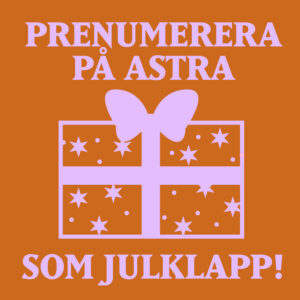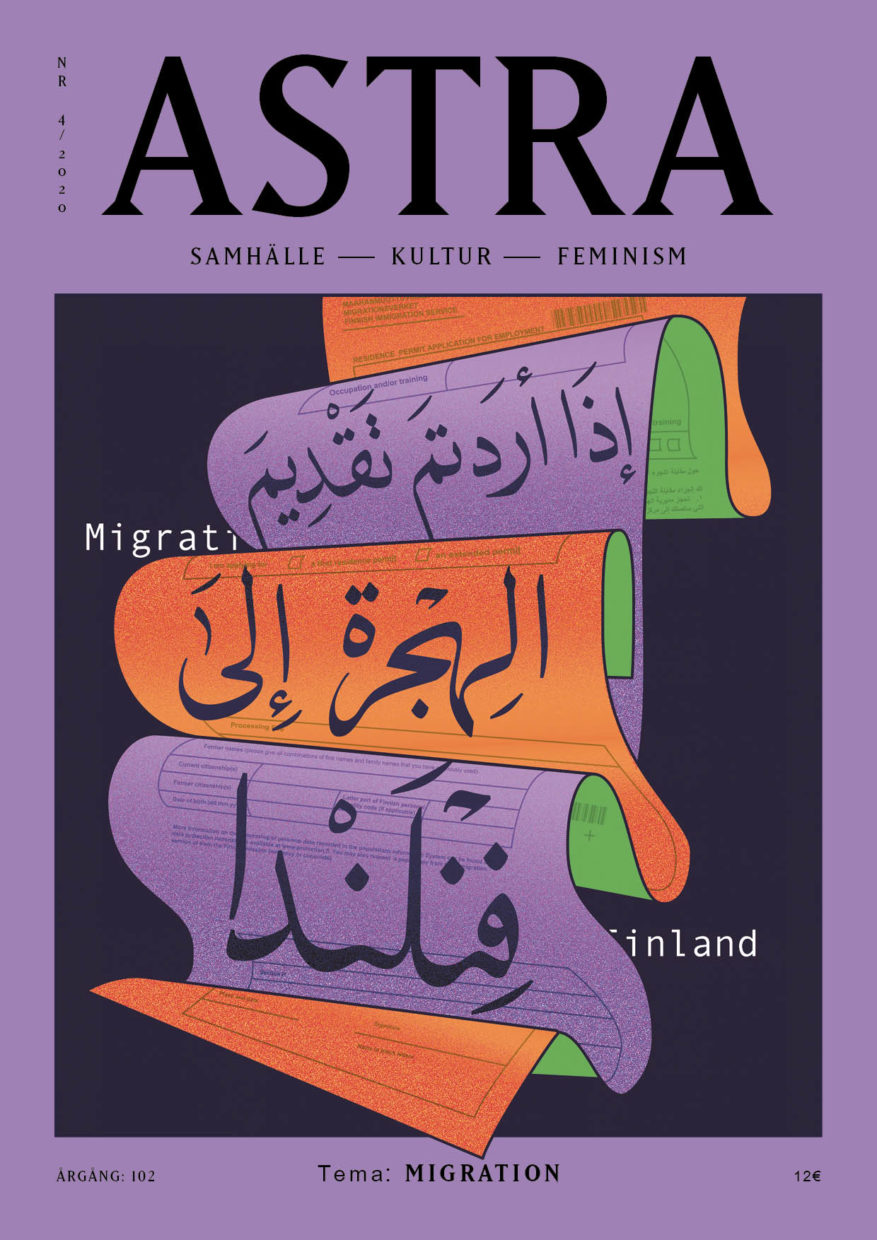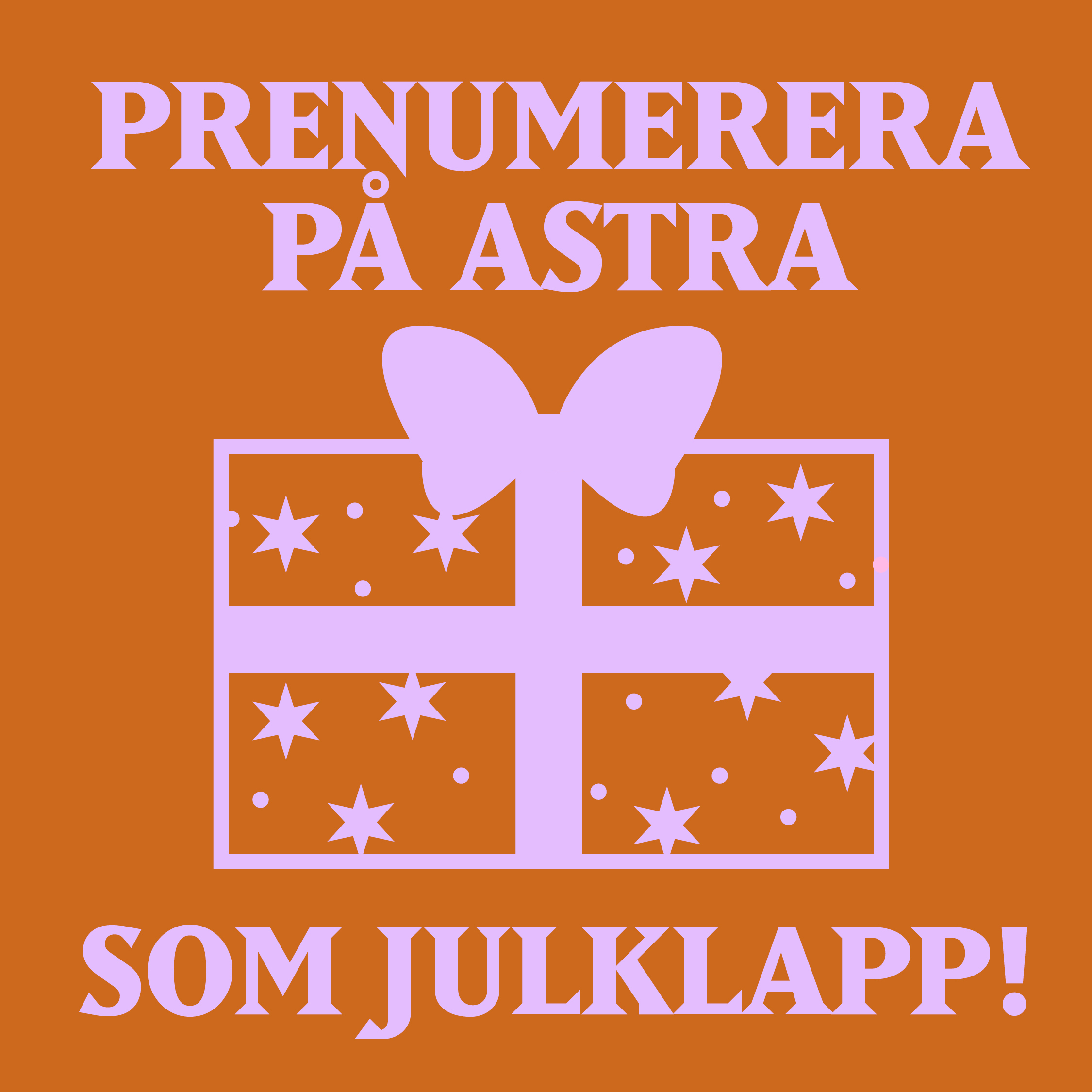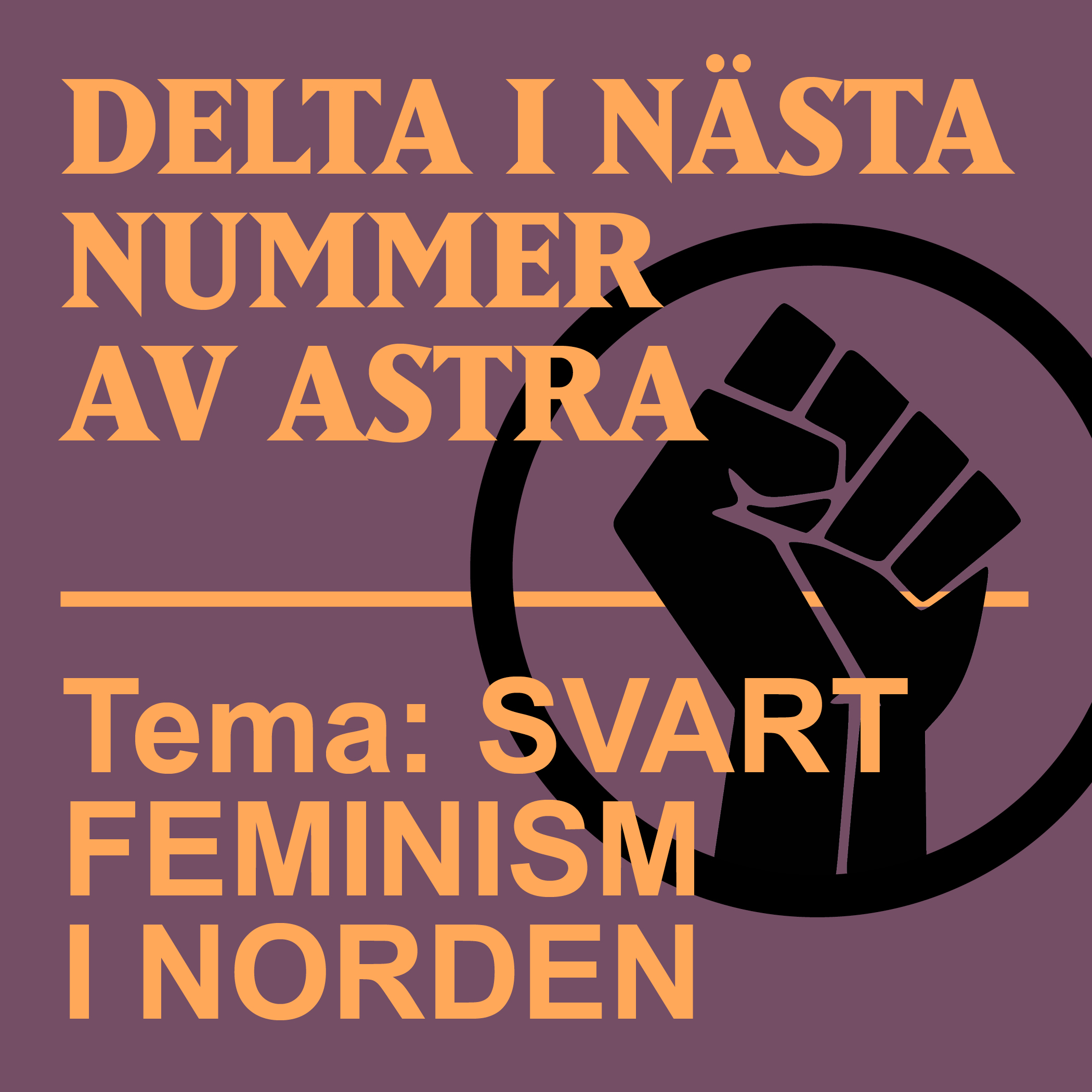White Nation and Anti-racist Lessons for Feminism – av Daria Krivonos
”The fear of small numbers” and the work of imagination
In the public discussion of migration, migrants are often seen as the outsiders to be governed by integration policies and immigration controls. They bear the exclusive responsibility for integration, assimilation and becoming a part of a supposedly homogenous nation-state. Migration tends to be discussed through the adjectives such as “new” and “unprecedented”, creating the emotional regime of fear to lose the stability and fixity of the nation.
This framing of migrant bodies as “bringing multiculturalism” leaves silent the massive effort that is continuously mobilized to produce and maintain this imagined national homogeneity. The violent histories that are at the centre of these processes become even more difficult to discuss in the context of Finland since the country is perceived as an outsider to the global histories of racism and colonialism. Injustice and discrimination do not belong to this idyllic picture of a peaceful Nordic nation.
“I suggest that taking the histories of making a white nation seriously has some major lessons not only to the understanding of migration but also anti-racist feminist struggles.”
But there is an urgent need to debunk one of the central myths that structure our understanding of migration and the Finnish nation – the latter’s imagined ethnic and cultural homogeneity. The idea of exceptional homogeneity ignores the histories of assimilatory and repressive state actions targeted against indigenous people and historical minorities. The word “imagined” is not accidental here, as it is the constant work of imagining one’s belonging to whiteness, Europe and the global West that is so central to this national project that produced, nevertheless, very material and violent effects.
The popular logic that connects migration to the Finnish nation is the following: if Finland has always been a historically homogenous white nation, then racism is only a recent phenomenon driven by the recent increase in non-white and migrant populations.
Against the grain of these popular narratives of the “newness” of ethnic and cultural diversity, an obsession with whiteness and the policing of its purity is at the core of contemporary Western societies, including Finland. The connections between the nation and race, and the myth of the national homogeneity must be critically interrogated when discussing “the fear of small numbers”, to borrow from anthropologist Arjun Appadurai. Indeed, Finland’s foreign-born people represents only 6% of the total population, which is the smallest number in the Nordic countries. Yet, this is not the number per se but any visible presence of non-white bodies that becomes a threat to the self-evidence of the white norm of the nation. I suggest that taking the histories of making a white nation seriously has some major lessons not only to the understanding of migration but also anti-racist feminist struggles.
Finland, Europeanness and Whiteness
But what are the histories behind this taken-for-granted norm of whiteness and at what cost Finland and the West more broadly have achieved this whiteness?
Although it has become somewhat natural for contemporary racialized vision to conflate “being white” with “being European” in public discourses and imagination, we should critically re-read whiteness as a socially located phenomenon (not a biological or phenotypical!), which was created through particular histories and geographies. Whiteness was historically invented through Europe’s colonial conquest by designating colonised Others as “non-white”, ”savage” and ”privimitive” to exploit their land, resources and labour. Europeans racialized whiteness and turned it into a fetish object to legitimise their colonial domination. Attaching the exclusive right to whiteness to Europeans also required excluding and marginalising non-European forms of whiteness, such as, for example, Chinese and Middle Eastern whiteness.
Even though Finland’s involvement in the colonial endeavors are not comparable to those of major colonial empires, there are multiple ties that show the desire to belong to whiteness and Western cultural tradition. Due to Finland’s own precarious position across the East/West divide and European whiteness, clear demarcations from its own non-white Others have been an important way to claim own belonging to Western Europe. Finns were assigned a lower status in the racialised hierarchies produced by scientific racism of the 18th to 20th centuries, which categorised Finns as non-white and non-European. This led to some Finnish scientists’ investment in forceful counter arguments, many involving the racialisation and subjugation of the Sámi people, to prove Finns were white and European. For instance, several studies in physical anthropology were conducted to measure the skulls of Sami people. The Sámi were particularly inferiorised and stigmatized through the references to their supposed “privitiveness” and nomadism.
“It is crucial to remember that the Finnish nation-state is built on the land of Sami, so deportations of migrants by the Finnish state should be rethought from the perspective of how the nation itself occupies the land of others.”
It is crucial to remember that the Finnish nation-state is built on the land of Sami, so deportations of migrants by the Finnish state should be rethought from the perspective of how the nation itself occupies the land of others.
Finnishness, as an opposite to Russianness and Eastern-ness, was also gradually constructed during the process of building Finland into an independent Western nation. These historical developments and boundary-making processes still affect Finland’s largest migrant group today, which are Russian-speaking people. They become racialised, that is, ascribed characteristics as immutably different from the Finnish majority population, as Finland’s Eastern Others and not-fully-white subjects. The references to their perceived “Eastness” are mobilised to portray them as more traditional, violent, addicted to authoritarianism and less modern Others.
The idea of race as a hierarchical grading of populations and racism as a practice of exclusion are not an exception to the supposedly non-racist nation but shaped the idea of Finland’s nationhood itself. In many ways, the master-narrative of Finland as a homogeneous nation state was based on assimilating the Roma and Sámi people, for example, with a wave of changing their names into more ‘Finnish’ ones. Finland’s supposed ethnic homogeneity is then not a natural condition but a product of continuous effort and nation-building processes. Today, law enforcement and day-to-day ethnic profiling in public spaces are the reality for many people racialised as non-white, which is often justified by the majority population as keeping the order or even taking care of the non-white people. It is in this context that “extreme whiteness” – the one associated with right-wing extremism and the fringes of the political culture, and “ordinary whiteness” – the invisible norm that saturates the ordinary and the everyday of Finland – should be seen as part of the same power-structure, as we learn from Minna Seikkula’s (2019) work.
Once this historical investment in the production of national homogeneity and attachment to whiteness are taken seriously, the so called “migration crisis” is better understood as a “crisis of white hegemony”, as sociologist Suvi Keskinen (2018) suggests.
Gender equality and its sexualised Others
In addition to the unrecognised norm of whiteness, Finland’s national project is also centred around the idea of exemplary achievements in gender equality. Despite high rates of domestic violence and persistent inequality in the labour market, the dominant narrative of Finnishness is that gender equality has been already achieved. What kind of lessons can we learn for anti-racist feminist projects once the histories and the present of racial exclusion are taken into account?
”There is extensive evidence of the ways feminist agenda has been hijacked and adopted by right-wing anti-immigrant actors and parties – a phenomenon Sara Farris described as ‘femonationalism’.”
While the project of gender equality is indeed crucial to pursue, we have to be wary of the ways the nationalist framing of this project may further solidify the borders of the white nation. There is extensive evidence of the ways feminist agenda has been hijacked and adopted by right-wing anti-immigrant actors and parties – a phenomenon Sara Farris (2017) described as “femonationalism”. Gender equality, women’s liberation, LGBT rights can be used to reinforce civilizational hierarchies, where the West leads “backward Others” into progressive futures while turning a blind eye to its own violence and inequalities. The struggles for gender equality and sexual rights become isolated from the struggles of non-white populations. In Finland, within these normative discourses of nationhood, young migrant women are often represented as symbols of the violence and oppression that supposedly characterise families from ethnic-minority backgrounds.
In my research on Russian-speaking migrants in Helsinki, a lot of Russian women shared their reflections on the ways they are sexualized and gendered as exotic, sexually accessible women “from the East”. This stigma leads to considerable efforts from their side to present themselves as respectable women who put effort in policing their looks. In fact, they learn of their Russianness in Finland through the circulation of the “prostitute” stigma, as Anastasia Diatlova (2019) also discusses in her scholarly work. But most importantly, these were often other Finnish women that would comment on their looks as being too feminine and excessive, being the result of “oppression” and “patriarchal culture” from which Russian women supposedly come from. While being perceived as coming from the “patriarchal culture”, these are exactly same women who come to Finland as au pairs and who do cleaning, care and domestic work, thus liberating white majority women from the perils of housework.
“While being perceived as coming from the ‘patriarchal culture’, these are exactly same women who come to Finland as au pairs and who do cleaning, care and domestic work, thus liberating white majority women from the perils of housework.”
The “prostitute” stigma is indeed a shared experience among many women, which is the result of patriarchal policing of female sexuality and reproduction. But it also becomes visible how national and white women themselves become the perpetrators of this sexist ideology by casting the stigma on migrant and non-white women. The narrow and exclusionary ideas of what an emancipated Finnish/Nordic femininity should look and be like may further reinforce racialization of sexualized Others who supposedly do not fit into the Nordic project of gender equality and women’s liberation.While doing feminist work and activism, we should be cautious of the ways we can become complicit with solidifying the borders of a white nation.
The writer is a sociologist working on the questions of gender, migration, coloniality, racialisation, and labour with a particular focus on post-socialist migration. She got a PhD in the University of Helsinki in 2019.
Diatlova, A. (2019) Between Visibility and Invisibility : Russian-speaking Women engaged in Commercial Sex in Finland. PhD thesis, University of Helsinki
Farris, S. (2017) What is ‘femonationalism’? Open Democracy: Free Thinking for the World. https://www.opendemocracy.net/en/5050/what-is-femonationalism/
Keskinen, S. (2018) The ‘crisis’ of white hegemony, neonationalist femininities and antiracistFeminism. Women’s Studies International Forum, 68: 157-163
Seikkula , M (2019), ' (Un)making 'extreme' and 'ordinary' whiteness : Activists' narratives on antiracist mobilisation in Finland ' , Sociological Review , 67(5): 1002-1017 . https://doi.org/10.1177/0038026119841788
4/2020: Migration
Astra nummer 4/2020
Astras decembernummer 2020 har temat ”Migration”. Vi möter här en rad olika slags texter och genres: Allt ifrån en kortnovell inspirerad av en av världens mest kända sagor, till en längre artikel om hur den finska nationen konstruerar och upprätthåller vithetsnormer, till två recept och deras koppling till arv, historia och kolonialism.
Numret inrymmer dessutom fyra olika intervjuer med sju olika personer, däribland romandebutanten Nioosha Shams, som talar om hur hon vill skriva de berättelser som fattas i den svenskspråkiga litteraturen. Och i sin text ställer sig Dionysia Kang de väl motiverade frågorna: Who are these publications meant for? Who are these writers trying to inform or educate?
Det tryckta numret kan köpas hos Astras återförsäljare i Finland och Sverige, Eller beställas på vår webbshop:
PDF-kopian kan du läsa gratis nedan.
Ladda ner PDF: Astra 4 / 2020 Migration
Medverkande skribenter och illustratörer:
Fakhri Barzandeh
Yasmin Ibrahim
Dionysia Kang
Daria Krivonos
Arseniy Lobanovskiy
Ramieza Mahdi
Rudeina Mkdad
Yasmine Nechma
Jahanara Nuri
Sepideh Rahaa
Leila Inanna Sultan
Arvid Svenske
Sümeyra Tansel
Ioana Țîștea
Ibou Gueye
Farnaz Memar
Shareef Askar
Bianca Caso
Samar Zureik
Ge bort en prenumeration!

Hör du till dem som tänker ge julklappar i år? Vi har förstås tips på bästa presenten: antirasistisk, queer, klimataktivistisk feminism på 48 sidor per nummer, fyra gånger per år. Vem vill inte få det hem i brevlådan!?
För prenumerationsformulär, mer info om priser samt nedladdningsbart presentkort, klicka här ?
Jasmine Kelekay är Astras gästredaktör för temanumret Svart feminism i Norden
 Inför det första numret för 2021 med temat Svart feminism i Norden kommer Jasmine Kelekay att vara gästredaktör för Astra och forma tidskriftens innehåll. Kelekay är doktorand i sociologi vid University of California, Santa Barbara. Hennes forskningsintresse berör relationen mellan rasifiering och kriminalisering med fokus på konstruktioner av svarthet, institutionaliserad rasism mot människor med afrikanskt ursprung, samt de sätt på vilka dessa grupper skapar och utövar motstånd mot rasism. Förutom detta har Kelekay även skrivit flera artiklar och medverkat i olika forskningsprojekt kring samma teman. Astras redaktion och styrelse är hedrade över att få ha Kelekay som gästredaktör.
Inför det första numret för 2021 med temat Svart feminism i Norden kommer Jasmine Kelekay att vara gästredaktör för Astra och forma tidskriftens innehåll. Kelekay är doktorand i sociologi vid University of California, Santa Barbara. Hennes forskningsintresse berör relationen mellan rasifiering och kriminalisering med fokus på konstruktioner av svarthet, institutionaliserad rasism mot människor med afrikanskt ursprung, samt de sätt på vilka dessa grupper skapar och utövar motstånd mot rasism. Förutom detta har Kelekay även skrivit flera artiklar och medverkat i olika forskningsprojekt kring samma teman. Astras redaktion och styrelse är hedrade över att få ha Kelekay som gästredaktör.
Under rekryteringen framförde Kelekay på ett imponerande sätt hur numret kunde byggas upp av olika sorts skribenter och kreatörer. Numret kommer dels att behandla det som sker i Norden just nu, men även Black Lives Matter-rörelsens och den svarta feminismens ursprung och historia, något som ofta glöms bort i diskussioner om rasism i Finland och Norden. Framförallt kommer numret att lyfta fram svarta kvinnors och icke-mäns röster, erfarenheter och analyser ur ett nordiskt perspektiv.
Delta i nästa nummer av Astra – Tema "Svart feminism i Norden"
Black power-knytnäven i bilden på förstasidan: Eugenio Hansen. Bilden är modifierad.
[English below]
Mitt i en global pandemi, en försämrande global ekonomisk kris, och ett klimat där alltmer kraftfulla högerpopulistiska vindar blåser har Black Lives Matter-rörelsen mobiliserat fler människor i USA än någonsin och ytterligare miljontals människor runtom i världen. Under sommaren spreds rörelsen till alla världens hörn, inklusive Norden. Svarta aktivister i Finland, Sverige, Danmark, Norge och Island mobiliserade sig och anordnade protester, inte bara för att visa sin solidaritet med svarta amerikaner utan också för att markera att statligt våld och strukturell rasism även drabbar svarta människor i Norden. Detta har än en gång lyft anti-svart rasism i samhällsdebatten och påmint om relevansen av Black Lives Matter- rörelsen för Norden. Bakom mycket av detta arbete - såsom Black Lives Matter rörelsen i USA - står svarta (queera) kvinnor. Samtidigt har både det statligt sanktionerade våldet mot svarta kvinnor och transpersoner samt svarta kvinnors ledarskap i antirasistiska och feministiska rörelser förbisetts.
Detta temanummer om svart feminism i Norden har som syfte att lyfta svarta kvinnor och icke-mäns röster, erfarenheter, och analyser ur ett nordiskt perspektiv. Vi efterlyser bidrag som berör allt från samhällskritik till konst, från poesi till vetenskapliga texter, och från teori till praxis. Teman kunde exempelvis inkludera svarta feministiska rörelser i Norden, anti-svart rasism och afrofobi, Black Lives Matter, migration, svart feministisk praxis, svart feminism ur Hbtq-perspektiv, svart feminism och Pan-Afrikanism och svart feminism och intersektionalitet.
Vi efterlyser också bidrag som tar olika former, såsom forskning, essäer, debattartiklar eller intervjuer, men även poesi, litterära analyser, recensioner och dylikt.
Vi söker främst efter dig som skriver utifrån egna erfarenheter, men tar även emot bidrag från dig som forskar inom området. Vi söker bidrag som både handlar om svart feminism men som också använder sig av svart feministisk historia, litteratur, teori och praxis.
Vi välkomnar bidrag på alla språk, och kommer att publicera texter på både svenska och engelska. Om det språk du föredrar att skriva på inte är någon av dessa och du vill ha en översättning, hör av dig så försöker vi ordna en!
Skicka din idé på text (ca 500 ord) eller illustration till [email protected] senast den 4 december. Glöm inte att bifoga ett utkast till texten, en skiss, portfolio eller liknande i mejlet där du beskriver din idé! Viarvoderar alla medverkande skribenter och illustratörer. Gästredaktören för temanumret är Jasmine Kelekay.
***
In the midst of a global pandemic, a worsening global economic crisis, and an increasingly far-right political climate, the Black Lives Matter movement has mobilized more people in the United States than ever before and millions more around the world. This past summer, the movement spread to all corners of the world, including the Nordic countries. Black activists in Finland, Sweden, Denmark, Norway, and Iceland mobilized and organized protests not only to show solidarity with Black Americans but also to highlight anti-Black state violence and structural racism in the Nordics. This has brought anti-Black racism into mainstream debates and served as a reminder of the relevance of the Black Lives Matter-movement for the Nordic countries. Behind much of this work – just as with the Black Lives Matter-movement in the U.S. – are Black (queer) women. Yet at the same time, the violence against Black women and trans people as well as Black women’s leadership in antiracist and feminist movements continue to be overlooked.
This special issue on Black feminism in the Nordics aims to amplify Black women and non-binary people’s voices, experiences, and analyses from a Nordic perspective. We are looking for contributions engaging everything from social criticism to art, from poetry to empirical research, and from theory to praxis. Potential themes include Black feminist movements in the Nordics, anti-Black racism and afrophobia, Black Lives Matter, migration, Black feminist praxis, Black feminism from an LBTQ-perspective, Black feminism and Pan-Africanism, and Black feminism and intersectionality. We also welcome contributions that take different forms, such as research reports, essays, op-eds, or interviews, but also poetry, literary analyses, reviews, and so forth.
We are primarily looking for contributions from people with relevant lived experiences, but also welcome contributions from people conducting research on the topic. We are especially looking for contributions that make use of Black feminist history, theory, literature, and praxis.
We welcome contributions in all languages and will be publishing texts in both Swedish and English. If your preferred language is different from these and you would like to have your contribution translated, contact us and we will try to arrange it!
Submit a proposal for your text (around 500 words) or illustration to [email protected] by December 4th, 2020. Do not forget to attach a draft of your text, sketch, portfolio, etc. in the email. All contributing writers and illustrators will be paid. The guest editor for this special issue is Jasmine Kelekay.




